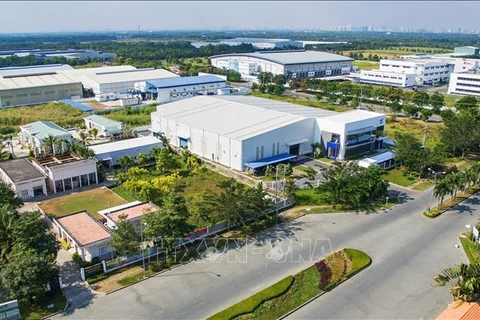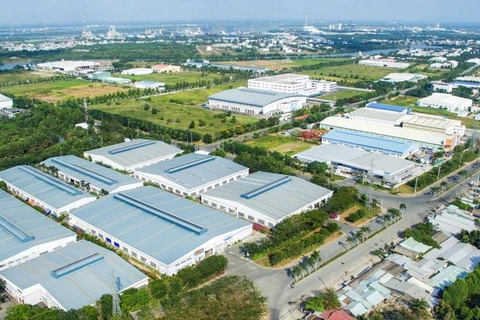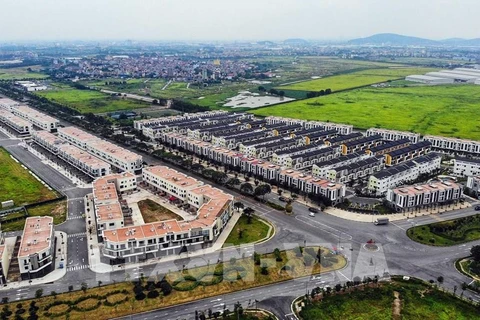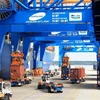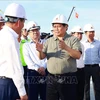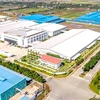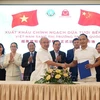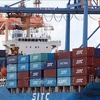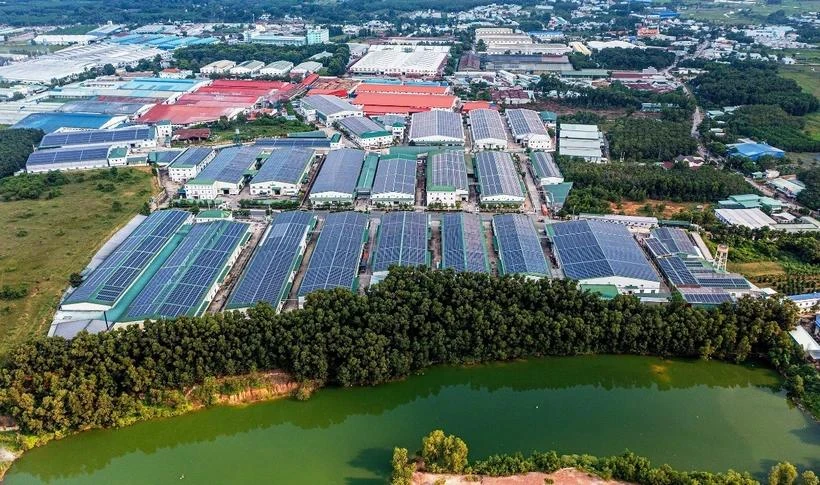
Hanoi (VNA) – Investors are bullish on Vietnam's industrial property market growth on the back of the nation's strategic location, sound infrastructure, and increasing demand for industrial space, particularly industrial parks that meet green standards, according to market research.
Stable operations
Commercial property advisor Knight Frank said although investors were hesitant to join the market due to global economic uncertainties coupled with policy changes, the market showed signs of recovery in the third quarter with increases in both supply of warehouse and rental prices in the south. Some 92,000 square meters of ready-built factories and 174,400 square meters of ready-built warehouses were launched, up 2% and 3%, respectively, from the previous quarter.
The net absorption of industrial land during July-September was 83 hectares, up 14.7% against Q2. Long An, Ba Ria – Vung Tau and Binh Duong provinces emerged as bright spots in investment as they lured various enterprises operating in different industries.
Knight Frank held that the development of new industrial parks is expected to enhance the South's attractiveness to investors.
In the North, leasing prices for ready-built warehouses averaged 5 USD per square meters per month, up 0.6% quarter-on-quarter and 3.4% year-on-year, reflecting the growing demand for modern and high-standard industrial space.
Bac Ninh has been a hotspot for industrial property leasing, boasting a strategic location and robust infrastructure. The first phase of the Industrial Centre Yen Phong Expansion is under construction while KTG Industrial Yen Phong have lured tenants from various sectors.
In the meantime, BWID ESR Nam Dinh Vu industrial hub in Hai Phong city added more than 70,000 square meters of warehouses to the market.
Despite a surge in supply, the northern industrial zones recorded high occupancy rates, averaging about 90%.
It is positive to see continued construction of ready-built factories, enhancing investment choices when considering Vietnam a destination to start or expand operations. Landlords are competing with each other which invariably creates a good environment for occupants and encourages growth. The range of products now available is significant and includes developments with environmental accreditation which brings Vietnam more in line with global supply chain requirements, said Alex Crane, Managing Director of Knight Frank Vietnam.
Green industrial land prioritised
Funneling increasing foreign direct investment into Vietnam, foreign enterprises have higher demand for large production space and warehouses to support operations. According to a KPMG survey involving 200 FDI companies, along with location, labour supply, and logistics infrastructure, industrial parks meeting green criteria are becoming one of the top priorities of the FDI companies.
The Vietnamese government set the target to become a developed country by 2045 and achieve net-zero emissions by 2050. Against this backdrop, green industrial zones in the nation have an advantage over traditional zones as they utilize technology, branding, and concessional loans under a Government decree.
The ecological industrial park (EIP) model was launched in 2014 with support from international organisations. It has been developed in Hai Phong, Dong Nai and Ho Chi Minh City during the 2020-2024 period, contributing to increasing the gross domestic product (GDP) by 0.8-7% and reducing emissions by 8-70%.
Senior Manager of Industrial Real Estate at Savills Hanoi Thomas Rooney said around 80-85% of foreign-invested firms have stringent ESG (Environmental, Social and Governance) standards when choosing warehouses and factories.
Vietnam should embrace sustainability to compete with regional markets like Thailand, the Philippines and Indonesia where green industrial products have been successfully developed, he suggested.
Avison Young, Vietnam’s commercial real estate agent, recommended Vietnam complete legal regulations related to the development of the EIPs, build green finance mechanisms, and begin to invest in the research and development of sustainable technologies.
Besides, it is necessary for the country to upgrade infrastructure to meet the requirements of the EIPs, pen training courses on the management of green industrial parks, as well as work to raise public awareness of the benefits of sustainability, it added./.
